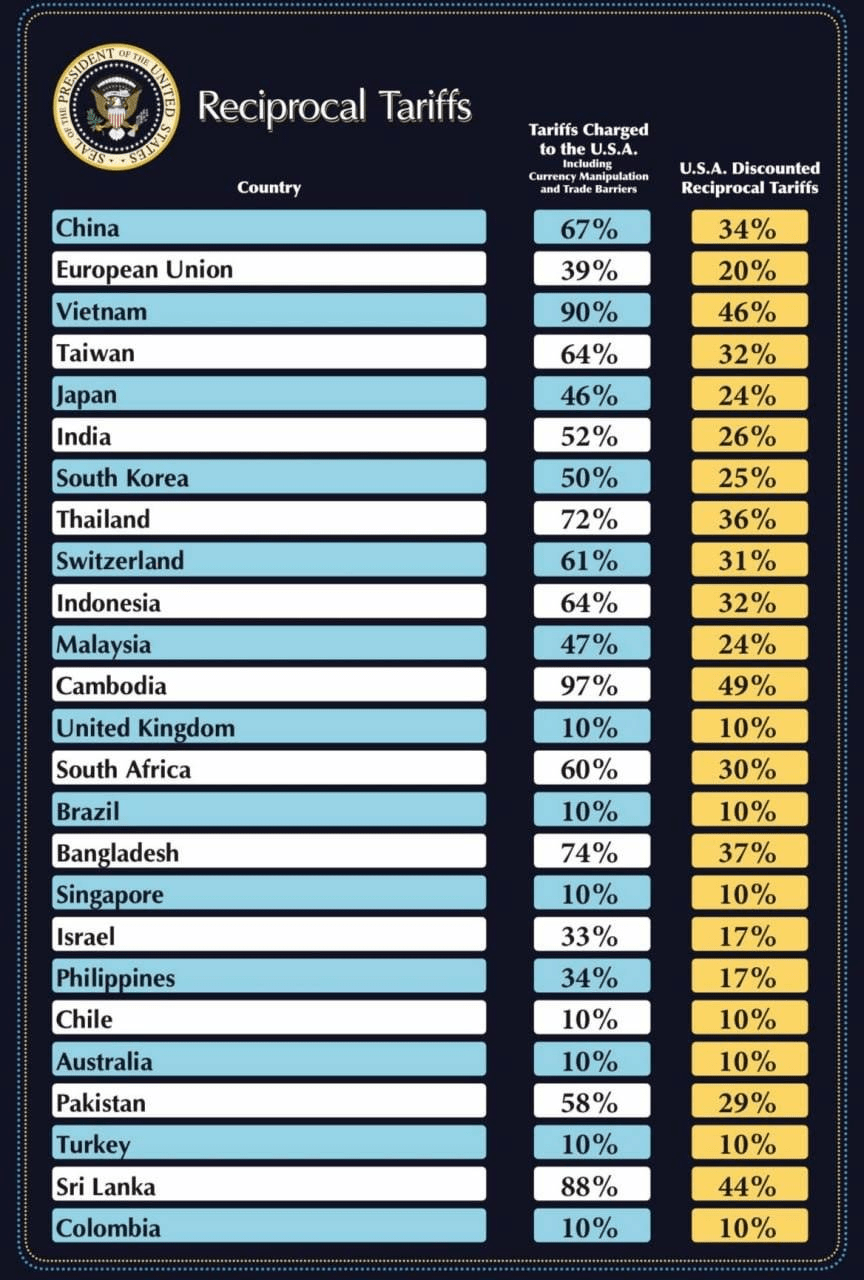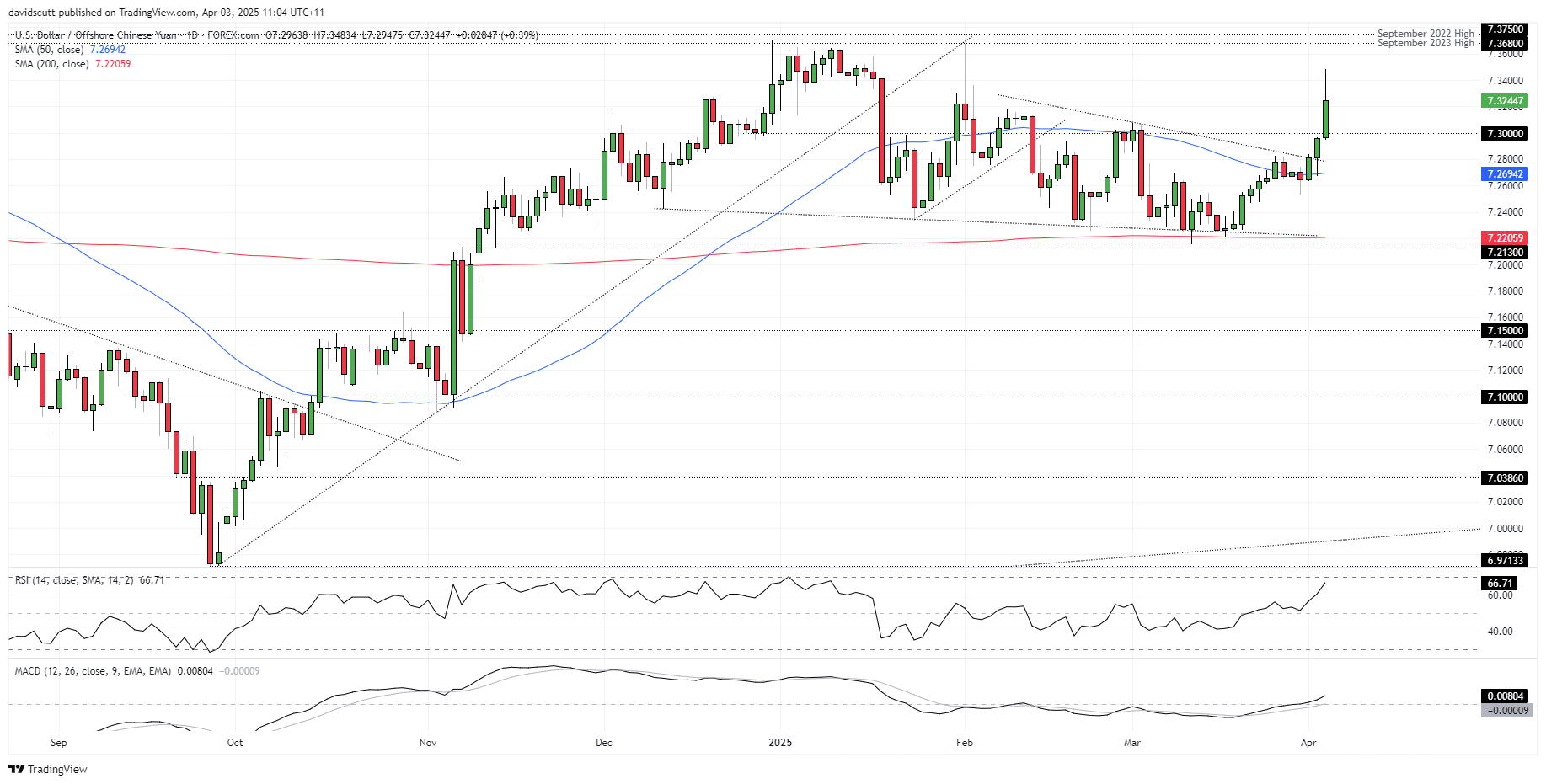- Yen surges on risk aversion, collapsing U.S.-Japan rate spreads
- China’s yuan weakens sharply, USD/CNH breaks key 7.30 level
- Markets eye Thursday’s PBOC fix for signs of potential yuan weaponization
- USD/JPY selloff accelerates; key supports at 147.10 and 144.23 in focus
Summary
The and have sharply diverged against the following Donald Trump’s Liberation Day tariff announcement, despite both being among the hardest hit nations. The yen has surged on rampant risk aversion and collapsing interest rate differentials, while the yuan has tumbled on fears over its economic impact on China.
Source: U.S. Government
China Yuan Fix in Focus
The effective U.S. tariff rate on Chinese imports now stands at a hefty 54%, placing immense strain on China’s manufacturing sector which is already grappling with chronic overcapacity. The impact won’t be felt in China alone—it will ripple through its major trading partners, many of which are in Asia.
Whether China plans to negotiate with Trump could become clearer when the People’s Bank of China announces the fixing level later Thursday. If Beijing chooses to weaponise the yuan, it could make an already brutal day for risk assets even worse. That’s now a very real risk. The fix will be released around 9:15 AM Beijing time, making it a must-watch event for traders.
Source: TradingView
Ahead of the fix, the offshore yuan (CNH) has weakened sharply with USD/CNH breaking wedge resistance and slicing through the key 7.30 level after the tariff news. That level may now act as support, with the next upside target sitting at the September 2023 high of 7.3680. Just above lies the offshore yuan’s record low—a break of that could fuel an explosive move higher. While it’s unclear if the move will persist, a modest reversal from earlier highs suggests Chinese policymakers may already be stepping in to cushion the yuan’s fall.
Momentum signals are shifting in favor of the bulls. RSI (14) is trending strongly higher while MACD has crossed into positive territory after flipping above the signal line in late March.
USD/JPY Tumbles as Risk Aversion Rises
As flagged in this week’s USD/JPY outlook report, Japan was always likely to be among the hardest hit by Trump’s tariff changes given the sheer size of its auto exports to the U.S.—now facing 25% tariffs. But the additional 24% reciprocal tariff rate on other exports far exceeds Japan’s 10% sales tax, ensuring its massive export sector takes a serious hit from falling U.S. demand.
However, the yen was always more likely to react to market sentiment toward broader tariff policy—which has been far more extreme than expected. A steep selloff in risk assets, combined with a sharp narrowing in U.S.-Japan interest rate differentials, has set the stage for a potential nasty leg lower in USD/JPY. If forced carry trade unwinds kick in, we could see price action similar to the August 2024 meltdown.
Source: TradingView
After a bearish wedge break earlier this week, USD/JPY has extended its decline post-tariff announcement, cutting through 148.65—a key pivot level in recent months. The next downside target for bears is a retest of support at 147.10. If the March swing low gives way, there’s not a lot of visible support evident until 144.23. Meanwhile, 148.65 may now act as resistance, with 150 proving tough to crack earlier this week.
Momentum signals remain firmly bearish, favoring continued downside. RSI (14) is trending lower but not yet oversold, while MACD is close to crossing into negative territory from above. The broader takeaway? Selling rips and bearish breaks remains the favored play.




